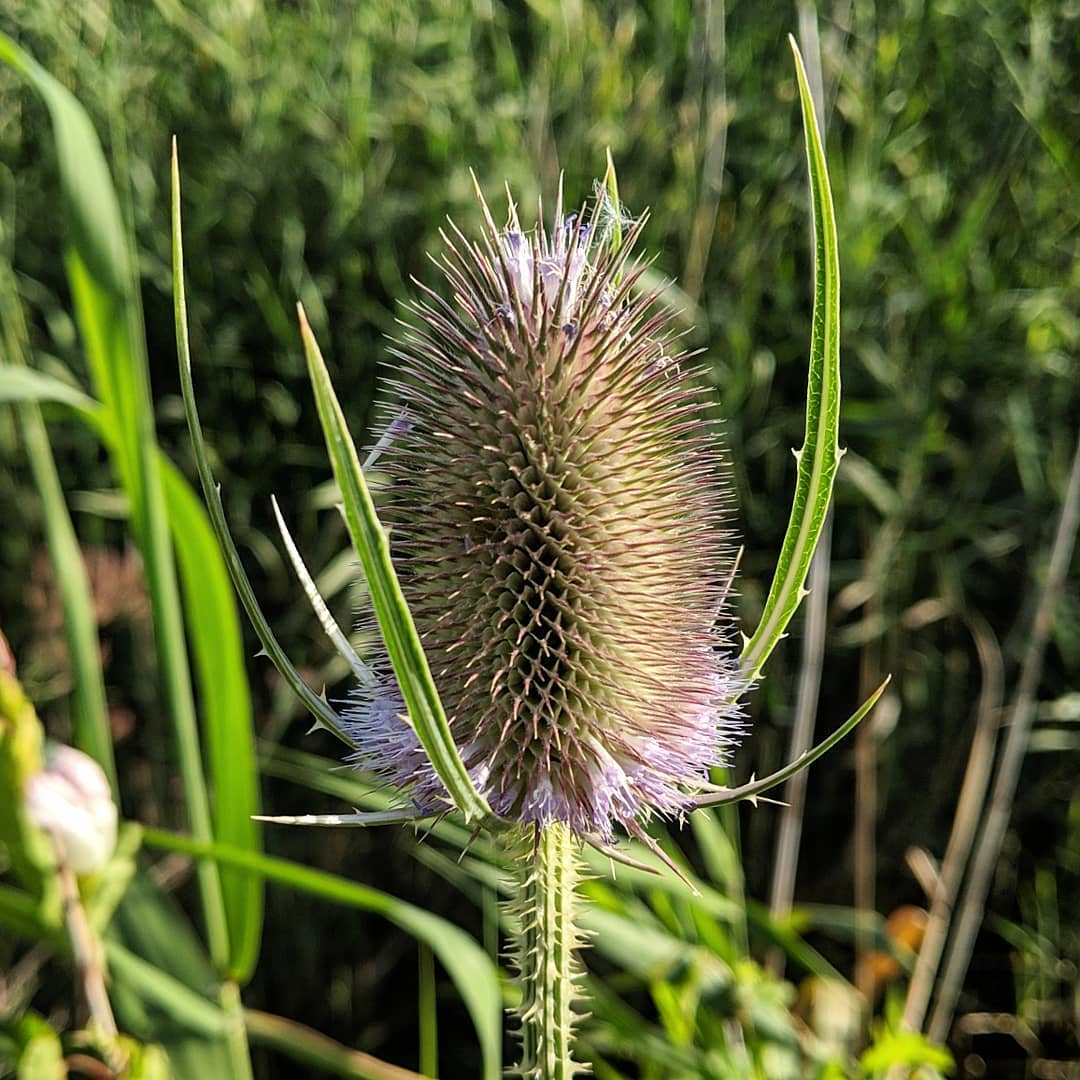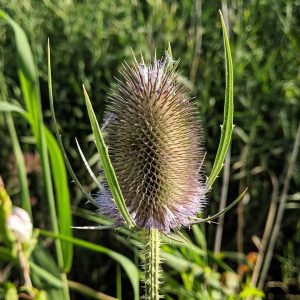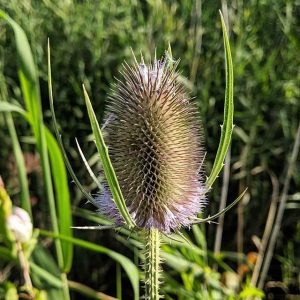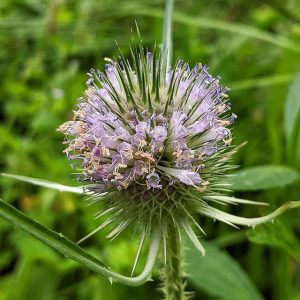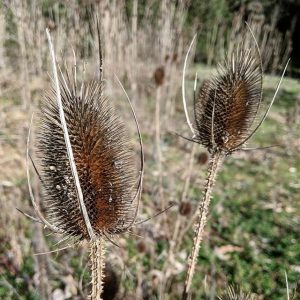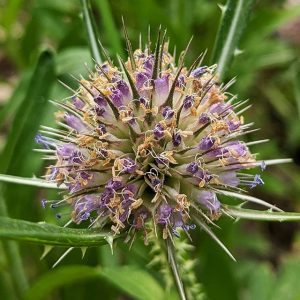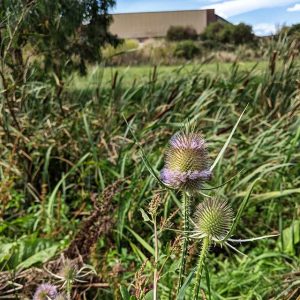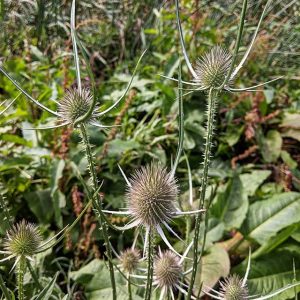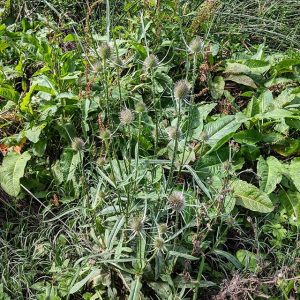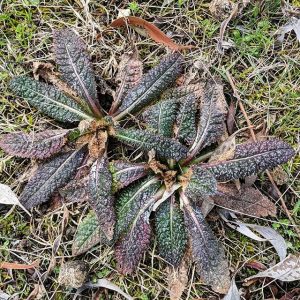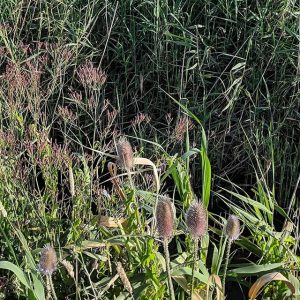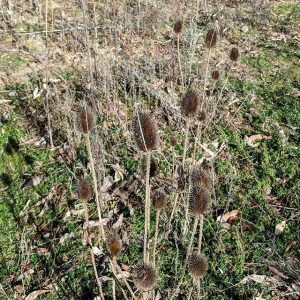Teasel (Dipsacus fullonum), a biennial Eurasian colonist of damp ground, introduced to Australia as a textile comb, grain contaminant and occasional ornamental and floriculture selection.
Teasel is found on floodplains and seasonally wet upland areas, and on infrastructural margins like roadsides and rail ditches. It can tolerate a wide array of environmental factors, including sometimes very dry and desolate locations, but grows best on wet sites where it can form dense infestations consisting of a prickled green rosette in year one culminating in a flower spike as much as 2.5 metres tall in its second year.
Each plant produces hundreds of seeds; most drop in close proximity to the parent but they can also be dispersed by birds, flood movements and mechanical equipment. In the US and Canada, the modern highway system has become a key vector for the species, combining perennially wet grassy swales with mowing regimes that provide recurring disturbance: managing potential overshadowing competitors while also distributing the seeds to new sites.
Teasel was recorded on the Jordan River in Tasmania in 1894, in the NSW Southern Highlands in 1897, and in Victoria in 1910, when it was collected in the valley of the Moorabool River. At one site near Ballarat the plant was said to have ’taken complete possession of about 11 acres of land… a very objectionable weed, covered with spines in every part, and difficult to suppress when once allowed to establish itself and seed.’ By 1913, Teasel had been proclaimed under the Federal Quarantine Act, although too late to prevent its permanent establishment in the country’s south-east.
View Original Post on Instagram
Search for information about Dipsacus fullonum in the Flora of Victoria
View information and occurrences of Dipsacus fullonum on the Atlas of Living Australia
